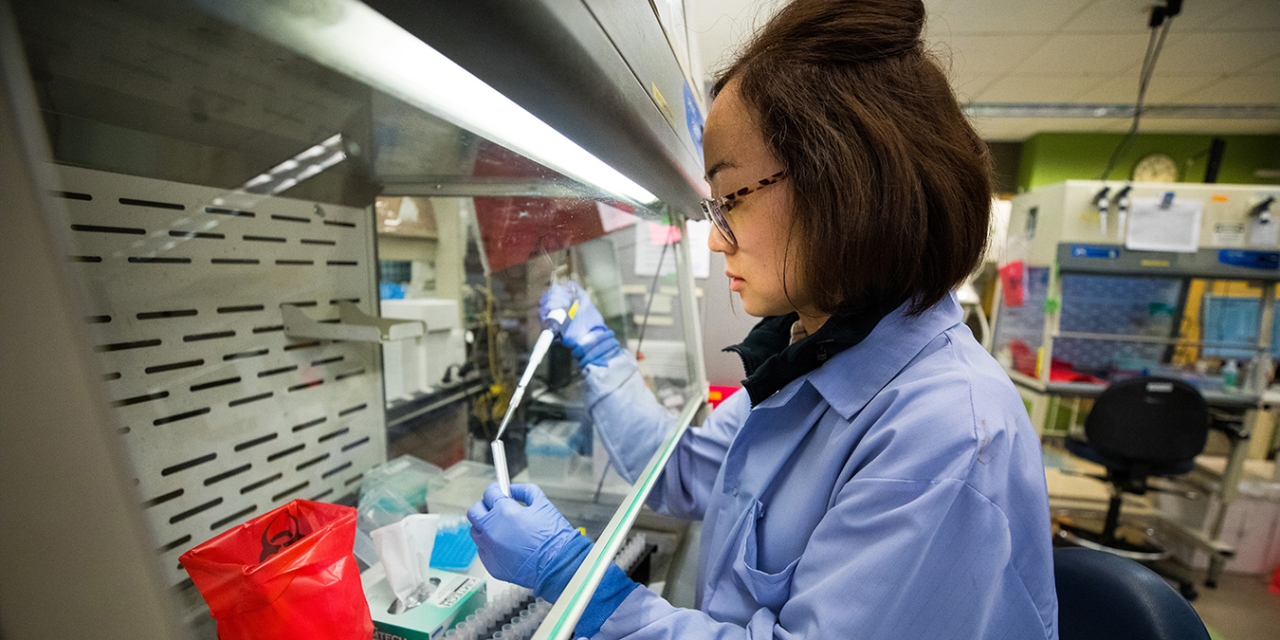The Origins and Spread of COVID-19

The COVID-19 pandemic, caused by the novel coronavirus SARS-CoV-2, has had a profound impact on the world, disrupting lives, economies, and healthcare systems. Understanding the origins and spread of this virus is crucial for developing effective prevention and control measures.
Initial Discovery and Identification
The initial discovery of the virus can be traced back to December 2019, when a cluster of pneumonia cases with an unknown cause was reported in Wuhan, China. The virus was eventually identified as a novel coronavirus, named SARS-CoV-2, due to its similarity to the virus that caused the Severe Acute Respiratory Syndrome (SARS) outbreak in 2003. Scientists were able to isolate and sequence the virus’s genome, which provided valuable insights into its characteristics and potential for transmission.
Key Characteristics and Mutations, Who covid 19
SARS-CoV-2 is a single-stranded RNA virus that spreads primarily through respiratory droplets produced when an infected person coughs, sneezes, or talks. The virus has a relatively high mutation rate, which has resulted in the emergence of numerous variants with different characteristics. Some variants have been shown to be more transmissible, while others have demonstrated increased resistance to vaccines.
Timeline of Global Spread
The virus quickly spread beyond Wuhan, reaching other parts of China and then to countries around the world. The first case outside of China was reported in Thailand on January 13, 2020. By February, the virus had spread to Europe, North America, and other continents. The rapid spread of the virus was attributed to several factors, including:
- International travel: Travelers from Wuhan and other affected areas unknowingly carried the virus to different parts of the world, facilitating its spread.
- Social gatherings: Large gatherings, such as concerts, sporting events, and religious services, provided opportunities for close contact and transmission.
- Lack of awareness and preparedness: Initial underestimation of the virus’s severity and transmissibility contributed to its spread.
- Inadequate testing and contact tracing: Limited testing capacity and insufficient contact tracing efforts hindered efforts to contain the virus.
Role of Healthcare Systems
Healthcare systems played a crucial role in the spread of COVID-19. Overwhelmed hospitals and healthcare workers faced challenges in providing adequate care to the growing number of infected individuals. Limited resources, including personal protective equipment (PPE) and ventilators, exacerbated the situation. The pandemic also highlighted the importance of robust public health infrastructure, including surveillance systems, contact tracing, and community engagement, in effectively responding to infectious disease outbreaks.
Impacts of COVID-19 on Society and the World

The COVID-19 pandemic has had a profound and multifaceted impact on societies and the world at large. It has disrupted everyday life, strained healthcare systems, and caused economic downturns, while also highlighting existing inequalities and vulnerabilities.
Social Impacts
The pandemic has had significant social impacts, altering how people interact, work, and live.
- Increased Social Isolation and Loneliness: Lockdowns and social distancing measures led to widespread social isolation, particularly among older adults, individuals living alone, and those with pre-existing mental health conditions.
- Mental Health Challenges: The pandemic has exacerbated existing mental health issues and contributed to the emergence of new ones. Anxiety, depression, and stress levels have risen significantly, fueled by fear of infection, economic uncertainty, and social isolation.
- Changes in Social Norms: The pandemic has accelerated the adoption of new social norms, such as increased reliance on technology for communication and work, heightened awareness of hygiene practices, and a greater appreciation for the importance of community and social support.
Economic Impacts
The pandemic has caused a global economic recession, with widespread job losses, business closures, and disruptions to supply chains.
- Economic Downturn: The pandemic led to a sharp decline in economic activity, as businesses were forced to shut down or operate at reduced capacity. This resulted in widespread job losses, reduced consumer spending, and a decrease in global trade.
- Increased Inequality: The pandemic has exacerbated existing economic inequalities, with low-income workers, marginalized communities, and small businesses disproportionately affected by job losses and income insecurity.
- Government Spending and Debt: Governments worldwide have implemented significant economic stimulus packages to mitigate the economic impact of the pandemic. This has led to increased government spending and debt levels, raising concerns about future economic stability.
Political Impacts
The pandemic has had significant political impacts, including changes in government policies, increased public distrust, and the rise of populism.
- Government Responses: Governments have responded to the pandemic with a wide range of measures, including lockdowns, travel restrictions, and economic stimulus packages. These responses have varied significantly across countries, reflecting differences in political systems, cultural norms, and economic conditions.
- Public Trust in Government: The pandemic has led to increased public distrust in government, particularly in countries where the response to the pandemic has been perceived as ineffective or poorly managed.
- Rise of Populism: The pandemic has contributed to the rise of populism in some countries, as people have become more receptive to nationalist and anti-establishment rhetoric.
Impact on Education
The pandemic has significantly disrupted education systems worldwide, leading to widespread school closures and the shift to online learning.
- School Closures: To contain the spread of the virus, governments around the world implemented school closures, affecting millions of students. This disruption to traditional education systems raised concerns about learning loss, particularly among vulnerable populations.
- Transition to Online Learning: The pandemic accelerated the transition to online learning, with many schools and universities adopting remote teaching methods. While online learning has its advantages, it also presents challenges, such as access to technology, digital literacy, and the potential for social isolation.
- Impact on Educational Equity: The pandemic has exacerbated existing inequalities in education, with students from low-income families, rural areas, and marginalized communities facing greater challenges in accessing quality education.
Impact on Healthcare
The pandemic has placed immense strain on healthcare systems worldwide, leading to overwhelmed hospitals, shortages of medical supplies, and delays in non-COVID-19 care.
- Overwhelmed Healthcare Systems: The surge in COVID-19 cases overwhelmed healthcare systems in many countries, leading to hospital bed shortages, long wait times, and a strain on medical personnel.
- Shortages of Medical Supplies: The pandemic led to global shortages of essential medical supplies, such as personal protective equipment (PPE), ventilators, and testing kits. This shortage hampered healthcare workers’ ability to provide adequate care to patients.
- Delays in Non-COVID-19 Care: The focus on treating COVID-19 patients led to delays in non-COVID-19 care, such as elective surgeries and routine checkups. This has had significant consequences for patients with chronic illnesses and other health conditions.
Impact on the Economy
The pandemic has had a devastating impact on the global economy, leading to widespread job losses, business closures, and disruptions to supply chains.
- Job Losses and Unemployment: The pandemic led to massive job losses and a surge in unemployment rates globally. This was particularly pronounced in sectors such as tourism, hospitality, and retail, which were severely impacted by lockdowns and travel restrictions.
- Business Closures: Many businesses, particularly small and medium-sized enterprises (SMEs), were forced to close or operate at reduced capacity due to lockdowns and decreased demand. This resulted in significant economic losses and job displacement.
- Disruptions to Supply Chains: The pandemic disrupted global supply chains, leading to shortages of goods and materials. This was particularly evident in the production of essential items such as medical supplies and food.
Long-Term Consequences
The long-term consequences of the pandemic on society and the world are still unfolding, but some key areas of concern include:
- Economic Recovery: The speed and extent of economic recovery will depend on factors such as the effectiveness of government policies, the availability of vaccines, and the pace of consumer confidence.
- Social and Political Polarization: The pandemic has exacerbated existing social and political divisions, raising concerns about social cohesion and political stability.
- Changes in Global Governance: The pandemic has highlighted the need for greater international cooperation and coordination in addressing global health threats. This could lead to changes in global governance structures and institutions.
Individual and Collective Responses to COVID-19: Who Covid 19

The COVID-19 pandemic has profoundly impacted individuals and societies worldwide, prompting a wide range of responses, both personal and collective. From the initial shock and uncertainty to the development of vaccines and ongoing efforts to manage the virus, the pandemic has forced individuals and communities to adapt and evolve in unprecedented ways.
The Impact of COVID-19 on Individual Behavior and Mental Health
The pandemic has had a significant impact on individual behavior and mental health. The fear of infection, social isolation, and economic uncertainty have led to widespread anxiety, depression, and stress. Many people have experienced changes in their daily routines, work patterns, and social interactions, leading to feelings of isolation and loneliness. The pandemic has also exacerbated existing mental health conditions and increased the demand for mental health services.
The World Health Organization (WHO) estimates that the pandemic has led to a 25% increase in the prevalence of anxiety and depression globally.
The Role of Public Health Measures in Controlling the Spread of COVID-19
Public health measures, such as mask-wearing and social distancing, have played a crucial role in controlling the spread of COVID-19. These measures aim to reduce the transmission of the virus by limiting close contact between individuals. Mask-wearing helps to prevent the spread of respiratory droplets, while social distancing maintains a safe distance between people.
Studies have shown that mask-wearing can significantly reduce the risk of COVID-19 transmission, and social distancing can effectively slow the spread of the virus.
Challenges and Successes of Vaccine Development and Distribution
The development and distribution of COVID-19 vaccines have been a monumental achievement in the fight against the pandemic. Scientists and researchers around the world worked tirelessly to develop safe and effective vaccines in record time. However, the global distribution of vaccines has faced significant challenges, including supply chain issues, logistical difficulties, and vaccine hesitancy.
The success of the vaccine rollout has varied across different countries, with some nations experiencing higher vaccination rates than others.
Ethical and Social Implications of Vaccination and Public Health Interventions
The COVID-19 pandemic has raised ethical and social questions about the role of government in public health, the rights of individuals, and the equitable distribution of resources. The use of vaccines and other public health interventions has been the subject of debate, with some arguing that mandatory vaccination policies infringe on individual liberty, while others maintain that such measures are necessary to protect public health.
The pandemic has highlighted the importance of addressing health disparities and ensuring that all members of society have access to essential healthcare services.
Who covid 19 – COVID-19, a virus that has had a profound impact on the world, has also led to increased awareness of the importance of healthy living, including proper posture and ergonomics. This is especially crucial for children, as they are still developing and need proper support.
To ensure their comfort and promote healthy growth, it’s essential to follow table and chair height guidelines for children , which can help prevent musculoskeletal issues and improve overall well-being. In a world still grappling with the effects of COVID-19, prioritizing children’s health is paramount, and ergonomic considerations play a vital role in achieving this goal.
COVID-19, a global pandemic that disrupted daily life, also impacted the world of sports. While the pandemic brought uncertainty to many athletes, some found a silver lining, like Kenny Pickett, who, despite the challenges, rose to prominence with the Philadelphia Eagles, demonstrating resilience and talent.
Kenny Pickett Eagles This underscores the importance of adaptability and perseverance, traits that proved crucial in navigating the COVID-19 era, both on and off the field.
